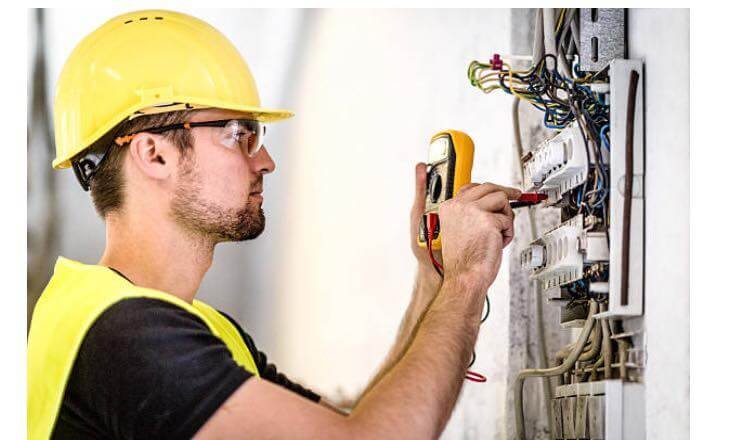As a landlord, navigating the ever-evolving landscape of legal requirements can be a daunting task. Recently, the spotlight has shifted to the Electrical Installation Condition Report (EICR) as a crucial aspect of property compliance. Understanding “Is an EICR a Legal Requirement?” is not just a matter of ticking boxes but ensuring the safety and well-being of tenants.
The EICR goes beyond mere paperwork; it has tangible implications for property owners and occupants alike. Let’s explore how this legal requirement impacts the rental landscape and what steps are necessary to stay in compliance.
Table of Content
Understanding Legal Requirements for EICR
Understanding the legal requirements for EICR is crucial for landlords to ensure compliance with national electric safety standards in London. As a landlord, I must conduct electrical installation checks every 5 years by a qualified individual. It’s essential to provide a copy of the certificate to existing and new tenants, and be prepared to share it with potential tenants upon request.
Furthermore, submitting the report to the local authority within 7 days of receiving it is a non-negotiable step. Remember to retain a copy of the report for future inspections to demonstrate adherence to regulations. Failure to comply with these requirements can result in significant fines and legal liabilities.
Therefore, staying informed and meeting these obligations promptly is pivotal to maintaining a safe and lawful rental property environment.
Applicability of Electrical Safety Rules
When applying to properties where tenants reside as their primary residence and pay rent, the electrical safety rules set forth specific guidelines for compliance. These rules encompass properties under shorthold tenancies and licenses to occupy. Exemptions to these regulations include social housing, long leaseholders, student halls, hostels, care homes, and healthcare-related accommodations. Understanding “Is an EICR a Legal Requirement?” is crucial, as the focus lies on ensuring the safety of tenants through the implementation of stringent electrical safety measures.
Adhering to these rules is crucial for landlords to ensure the well-being of their tenants and to fulfil their legal obligations. By understanding the applicability of these electrical safety rules, landlords can create a secure environment for tenants to reside in, ensuring that the electrical installations within the property are safe and in compliance with national standards. It’s imperative for landlords to be aware of these rules and to ensure that their properties meet the necessary safety requirements for the protection of their tenants and the avoidance of legal implications of EICR certificates consequences.
Regulations for HMO Properties
Moving from the discussion on the applicability of electrical safety rules to regulations for HMO properties, the focus shifts to ensuring electrical safety standards in Houses in Multiple Occupation (HMOs) with five or more tenants.

For HMO properties, it’s crucial to meet specific regulations to guarantee the safety of tenants. These regulations require HMOs with five or more tenants to adhere to strict electrical safety standards.
To ensure compliance, mandatory HMO permits are necessary for safe electrical installations. Additionally, a satisfactory Electrical Installation Condition Report (EICR) is essential to indicate safe electrical use within HMOs.
By obtaining and maintaining these permits and reports, landlords can demonstrate their commitment to providing a secure living environment for their tenants. Failure to comply with these regulations not only puts tenants at risk but also exposes landlords to potential legal consequences.
Therefore, it’s imperative for landlords of HMO properties to prioritise electrical safety standards to maintain a safe and compliant living environment for their tenants.
Components Tested in EICR
During an EICR inspection, I thoroughly examine electrical wiring, socket-outlets, light fixtures, and the consumer unit. These components are crucial in ensuring the safety and functionality of the electrical system within a property.
By assessing the wiring, I can identify any signs of wear, damage, or incorrect installations that could pose risks such as electrical fires or shocks. Socket outlets are inspected to ensure they’re in good working condition and properly grounded to prevent electrical faults.
Light fixtures are checked for any faults that could lead to overheating or short circuits. Additionally, the consumer unit, often known as the fuse box, is a key component that I evaluate to ensure it’s correctly installed and provides adequate protection against electrical overloads.
In some cases, connected devices such as showers and extractor fans are also included in the inspection to verify their safe usage within the electrical system.
Purpose of Electrical Safety Certificate
In conducting EICR assessments, I aim to ensure the safety and functionality of electrical systems within properties. The purpose of the Electrical Safety Certificate is paramount in safeguarding tenants and properties.

This certificate identifies overloaded electrical installations, potential shock hazards, fire risks, faulty electrical work, and deficiencies in earthing or bonding. It plays a crucial role in maintaining a secure living environment by detecting these electrical issues.
It’s important to note that the testing involved in the Electrical Safety Certificate doesn’t cover electrical appliances; landlords should consider Portable Appliance Testing (PAT) for those. By focusing on these key areas, the Electrical Safety Certificate makes a significant contribution to preventing electrical accidents and ensuring compliance with safety standards. Landlords are responsible for obtaining and adhering to the requirements of this certificate to guarantee the safety of their tenants and properties.
Consequences of Non-Compliance
Consequences for landlords who fail to comply with the EICR requirements can be severe, potentially resulting in significant financial penalties and legal liabilities. Failure to adhere to the EICR regulations in London could lead to fines of up to £30,000. Additionally, non-compliance may result in local authorities conducting emergency remedial work at the landlord’s expense. These penalties emphasise the importance of meeting the EICR obligations to ensure the safety of tenants and avoid legal repercussions.
Landlords must recognise that neglecting the EICR requirements not only jeopardises tenant safety but also puts their financial well-being at risk. By prioritising EICR compliance, landlords demonstrate their commitment to maintaining a secure living environment for tenants and safeguarding their own legal standing. Taking proactive steps to fulfil EICR obligations not only avoids penalties but also fosters trust and responsibility in the landlord-tenant relationship.
Frequently Asked Questions
Can I Conduct the EICR Inspection Myself if I Have Some Electrical Knowledge?
I wouldn’t recommend conducting the EICR inspection myself, even with electrical knowledge. It’s crucial to hire a registered electrician for accurate and compliant assessments. Safety and legal compliance are top priorities.
Are There Any Specific Qualifications That an Electrician Must Have to Carry Out an Eicr?
To carry out an EICR, an electrician must hold relevant qualifications, such as being a registered electrician. Ensuring the electrician is qualified is crucial for accurate inspections and compliance with safety standards.
How Long Does an EICR Inspection Typically Take to Complete?
Completing an EICR inspection usually takes around 2-4 hours, varying based on property size and complexity. It’s crucial for ensuring electrical safety. Remember, “An ounce of prevention is worth a pound of cure.”
Are There Any Specific Areas or Components Within a Property That Are Not Covered in an EICR Inspection?
In an EICR inspection, components like electrical appliances aren’t covered. It focuses on wiring, sockets, lights, and the consumer unit. It’s essential to also consider Portable Appliance Testing (PAT) for appliance safety.
Is There a Specific Format or Template That the EICR Certificate Must Follow for It to Be Considered Valid?
Starting with a vivid portrayal, the EICR certificate must adhere to a specific format for validity. It acts as a roadmap, guiding us through electrical safety. A critical document ensuring compliance and safeguarding lives.
Conclusion
Ignoring the EICR is like playing Russian roulette with tenants’ lives! Compliance isn’t just a legal obligation, it’s a moral imperative. Let’s prioritize safety and ensure our rental properties meet the necessary electrical standards.
Don’t risk the consequences of non-compliance – act now to protect those who call our properties home!

